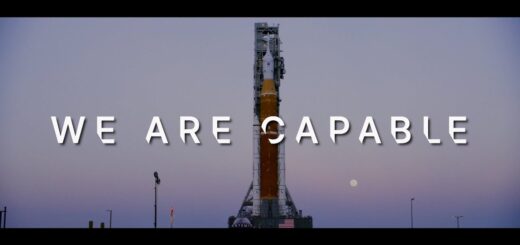How SpaceX Mastered Space Suits
This video is supported by Established Titles. 3 years ago, NASA unveiled its next generation spacesuit, designed to allow humans to walk on the Moon. But after this, everything went quiet and the spacesuits were never seen again. It turned out, NASA was 20 months behind schedule and millions of dollars over budget with the program. So in order to get a new spacesuit developed in time for the upcoming Artemis missions, NASA set up a competition and invited other companies to design the best suit. At the time, SpaceX already had their own IVA suit, so you’d think partnering with NASA to make an EVA suit would be the next step. But surprisingly, SpaceX didn’t even put in a bid for this contract. It turned out, SpaceX had already been working on an EVA suit for years and they wanted to go their own way with the development, like they did with their first suit. In this video we’re going to learn how SpaceX mastered their spacesuit design and the key breakthroughs that made it possible. We’ll also be giving away this awesome Saturn 5 Lego set at the end of the video and announcing the winner of the previous giveaway, so stick around till the end of the video to find out how you can win! SpaceX began developing its first spacesuit all the way back in 2015 when it hired Hollywood costume designer Jose Fernandez. After several months of designing a suit that looked as sleek as possible, it was then up to the SpaceX engineers to reverse engineer it and make it functional. To be clear, this isn’t the type of suit that an astronaut would wear outside on a spacewalk. This suit is primarily for keeping astronauts alive inside the spacecraft. But when you compare SpaceX’s suit to other pressure suits, it looks much sleeker – how is this possible? To answer this, we need to look at how spacesuits are normally designed. Spacesuits have traditionally been a one size fits all type of thing, since they are very expensive to make. On the ISS, the EVA suit is modular. But in general, nothing is made to fit and astronauts often get bruises and injuries after completing a spacewalk. This is where SpaceX excelled. Each suit they make is completely custom-made to fit the shape of each crew member. This has the obvious benefit of creating a much tighter fit, but the benefits go much further than that. One of the biggest problems when it comes to designing a spacesuit is mobility. When the suit is pressurized, it inflates like a giant balloon, making it extremely rigid and stiff. When an astronaut tries to bend their joint, the overall volume of the suit is reduced. Since the suit is completely sealed, the air has nowhere to go – and so bending the joint compresses the air, creating a lot of resistance for the astronaut. Spacesuit designers over the years have come up with many different ways to tackle this problem. For larger joints like wrists and shoulders, mechanical bearings are used to allow movement without changing the volume. For smaller joints like the fingers, rubber pleats are placed all the way down the back – forcing the glove to bend in an arc. This isn’t very natural, since our fingers don’t bend like that. Depending on your shape, the joints in your suit may not align with the joints in your body. This could limit your range of motion and require more force to bend each joint. Since each SpaceX suit is tailor-made, these joints can be replaced with smaller ones that line up perfectly with the joints of each astronaut. But even with a custom made suit, bending a sealed tube full of air is very difficult. That’s why every joint on the SpaceX suit is strengthened with these criss-cross tensioners, which help the astronaut bend the joint inwards. Then the pressure of the suit naturally helps the astronaut extend the joint back to its initial position. This is sort of similar to how a spider’s leg works. They only have a muscle to flex their limbs inward – and so they rely on hydraulic pressure stored inside their body to extend their limbs outward again. Another way to improve mobility is to simply have less air in the suit itself. The Space Shuttle suit operated at a pressure of 24 kilopascals, just a quarter of the pressure we experience here on Earth. Lowering the pressure may help with mobility – but it puts the astronaut at risk of getting decompression sickness. This is where the lower pressure inside the suit causes nitrogen in the body to dissolve and form bubbles in the blood vessels. Deep sea divers face the same problem when they come back up to the surface, as they quickly go from a high pressure environment to a much lower pressure environment. This can be a potentially fatal problem and many spacesuits require the astronaut to do pre-breathing before suiting up. This involves breathing pure oxygen for several hours before wearing the spacesuit, in order to get rid of all the nitrogen in the bloodstream. SpaceX didn’t want to complicate the process so choosing a pressure for the suit was a constant fight between safety and mobility. SpaceX’s suit had to meet NASA’s minimum requirements of 40 kilopascals to avoid decompression sickness. This is quite high compared to other spacesuits, so we can assume that SpaceX didn’t go much higher than that. The air we breathe on Earth is a mixture of 21% oxygen and 78% nitrogen. But since the pressure inside the suit is lower, the astronauts wouldn’t get a sufficient amount of oxygen. Some suits tackle this by making the air inside the suit pure oxygen. The SpaceX suits use a custom air mixture with a higher percentage of oxygen that can be varied automatically by the onboard life support system. But it’s how this pressure is managed that makes SpaceX’s suit even more impressive. Spacesuits typically have multiple valves and pipes on the outside, to control the suits pressure and temperature. SpaceX managed to combine all of these down into just one single port with a hole for air circulation, a power and communications connector, and a port to quickly inflate the suit during an emergency. An umbilical cord connects the suit directly into the astronaut’s seat, this is where the real magic happens. Here there are a series of solenoid valves that automatically control the pressure of the incoming air. A separate valve in the spacecraft allows chilled nitrox to flow into the suits air duct, keeping the suit cool during reentry. The pressure and temperature sensors inside the helmet feed the spacecraft with information, allowing it to automate the process. This level of automation took away the need for astronauts to manually adjust their suit pressure, allowing the designers to get rid of the bulky valves on the outside of the suit. Not only did this make the suit much lighter than the Space Shuttle suit – but it also made it much easier to put on. On the Space Shuttle suits, the helmet, gloves and headset were all attached separately using bulky metal rings. On the SpaceX suit, the gloves and helmet are already attached, and the headset is integrated into the helmet. All of this means that an astronaut can suit up all by themselves in just a few minutes. The Space Shuttle suit on the other hand took more than 20 minutes and required help from several technicians. The SpaceX astronauts might not need any help in this department, but maybe you need help buying Christmas gifts this year. You could make your friend or loved one feel really special by making them a Lord or Lady this Christmas. Established Titles is a fun and novel way to preserve the natural woodlands of Scotland while helping global reforestation efforts. It’s based on a historic Scottish custom where landowners are referred to as Lords or Ladies. Title packs give you one square foot of land on a private estate in Scotland, with an official certificate and crest that contains your unique plot number. With this, you can officially add Lord or Lady onto your name and have it on documents like credit cards, passports and plane tickets. With every order, they plant a tree and work with charities like One Tree Planted and Trees for the Future to support global reforestation. To get your Christmas gift, visit establishedtitles.com/primalspace and use the code ‘primal space’ to get 10% off. The first 200 people to purchase a title pack using the link below will effectively be next to my plot, so we can have our own little Primal Space land. And now for the moment you’ve all been waiting for. The winner of this awesome Space Shuttle lego set is… Sarah Hambrick! Congratulations, there is now a Space Shuttle on its way to your house. Sorry if you didn’t win, but don’t worry, after such a great response on the last video, we want to do another giveaway. In the next video we’ll be giving away this awesome Saturn 5 Lego set! All you have to do is sign up at the link below and leave a comment about what you’re looking forward to most in the world of spaceflight. We will announce the winner in next month’s video. Thank you very much for watching and I’ll see you in the next video!













